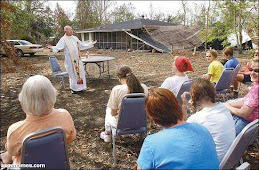So many of my friends are grieving the loss of a loved one, and since Tom (my husband) passed away, I have looked for something I could read which might help explain some of my feelings. I highly recommend this book, Awakening from Grief, Finding Our Way Back to Joy, by John E. Welshons.
I could not help but include the first section on page 153 from this book. I include it for all the “non-believers.” We “believers” already know about pets. Some of us are grieving for human loved ones, but there are also some of us who are grieving for the loss of our dogs or perhaps are grieving for both the human and dog loved ones.
Purchase at amazon.com.
Excerpt from Awakening from Grief, Finding Our Way Back to Joy, by John E. Welshons. Pages 153 – 155.
CONSIDER GETTING A PET
If you don't already have a pet, consider bringing one into your life and your home. Dogs, cats, and other animals can be wonderful companions. They can help you to feel needed and loved. They can give you a sense of responsibility and a connection to another living being. The care, nurturing, and love they require can help you to focus on something outside your own sadness and confusion. And the love, companionship, and protection they provide in return can be extraordinarily rewarding. Tuning to the rhythms of another species, learning their needs and habits, and seeing their instincts manifest can add a wonderful depth and new dimension to your life. They cannot replace a loved one, but they can bring a very refreshing new quality to your daily experience.
RELAX AND TAKE YOUR TIME
Don't feel that there is any rush. Our society always wants us to "feel better fast.” If you want to work with grief in a way that will be truly enlightening, that will have a lasting effect, that will integrate into your experience in a meaningful way, it will take time.
In a very real sense, grief never ends. We merely learn how to incorporate it into the totality of our beings rather than push it away. When we can embrace all of the aspects of human life - the joys and the sorrows - we no longer fear that we will drown in sadness. But we must be willing to feel it. It's part of the curriculum we're taking. The unwillingness to feel is what drowns us.
So it may take weeks, months, or years. And fifty years from now we may still cry because the human side of us misses having a loved one physically present. But we are not our bodies, and our relationships don't exist in our bodies - they exist in our hearts, in our minds, in our souls. When we become aware of that reality, we begin to loosen the grip of grief.
The cruelest thing we can do to someone in grief is to suggest that they should be “getting over it" within some predetermined time span. A mother who has lost a child never gets over it. She will, hopefully, go on with life, love more deeply, feel grateful for the time she did have with that child, and become more consciously attuned to her other children, if she has others. But she will never “get over it.” The pain is the child's legacy to the parent. Hopefully; the parent can use the pain as a lever to pry open whatever doors in the heart have been closed.
Grief is a part of human life. We don't get over it. We can, however, use it as a tool to grow, to improve our relationships, to remind us to stay present in this moment, to experience the expansiveness and radiance of our beings - who and what we really are - and the truth that grief is only a portion of who we are. We can fully and consciously confront our grief and at the same time laugh, love, rejoice, and live our lives with energy, conviction, and enthusiasm. Grief is a problem in our society only because we are so afraid of it.
PRACTICE THE BREATH THAT HEALS
One of the most healing methods of working through grief is the practice of breathing into the heart space in the center of the chest. Take some time each and every day to do the following: Close your eyes and bring your awareness to the place in your chest where your heart resides. Breathe deeply in and out of that center, imagining that you have a large opening where your sternum (the solid bone in the center of the ribcage that protects the heart) is located. Take several deep, long, slow, relaxed breaths and imagine that you can feel the air gently moving through that opening like a warm reassuring breeze.
Then gently imagine a warm, light-filled, candlelit room in the center of your chest. All of your loved ones reside within that room. Imagine each of them in the form that is most dear to your heart, the one that makes you feel the most love. Take time to visualize each one, working primarily with the ones you miss the most. See and feel their presence there. Know that they are always with you. Know that you can always talk to them, ask their advice, laugh with them. This is not living in the past - it is the recognition that our love is always alive. It is most alive in this present moment.
Ask your loved ones for their guidance. Ask them to help you overcome your loneliness. And remember, your loved ones are always with you, eternally alive in the warm, soft womb of your heart. You are not alone.
* * *
Excerpt from Pages 196 - 200
Hurricanes, the most dangerous and destructive forces in nature, have at their cores a circle, perhaps twenty to thirty miles in diameter, of calm, sunlight, and serenity. This circle is known as the "eye" of the storm, a vast, tranquil, open space around which the cyclonic storm swirls.
In the “eye" there is no wind. No rain. No clouds. No destruction. The sun shines. There is peace. It's a fascinating phenomenon. In the center of the most violent, raging, destructive force in nature, there is quiet ... calmness ... serenity.
In the months and years following a loss, we feel as though we're caught in an emotional storm. We are consumed with a sense of swirling, unpredictable danger, a profoundly unbalanced agitation, an unrelenting anxiety. But we have forgotten that we also have a calm center. In this case, the “I” of the storm.
We have forgotten that at the core of our beings is a detached, dispassionate awareness that watches it all with equanimity. It is the part of us that never changes. It is the part of us that transcends death. It is the part of us we call the "soul.”
But, like many other things our modern, technological society has ignored, our spirits - our souls - have been neglected for centuries. We hardly even know we have them. We read about them in holy books, but we don t really know them. Our popular religious traditions have left us with few methods for consciously recognizing their presence within us. But there are little glimmers throughout our lives.
In chapter 17, we made reference to those moments in the middle of a terrible argument with a loved one when we hear a little voice inside saying, "Isn't this ridiculous?!" At those times we sometimes fight against our inclination to dissolve into laughter, though we may be suddenly impelled to hug, kiss, and forgive the offender. There's a part of us watching it all from another vantage point.
At times of extreme danger, we may also notice that there is a dispassionate awareness watching our fear, watching our minds freak out, giggling with recognition that our terror is almost laughable. Virtually all the people I've ever spoken to who have experienced a sudden, unforeseen "accident" or frightening turn of events have reported that they noticed a calm awareness from which they were watching it all without fear. It's as if at moments of sudden shock or great stress our minds burn out momentarily and allow our conscious¬ness to dissolve, however briefly, into the pure, undifferentiated, peaceful awareness of our souls.
Similarly people who have had "near death" experiences talk about witnessing their consciousness rising up out of their bodies and hov¬ering overhead as they watch and listen to events unfolding in the room below-the doctors and nurses scurrying to resuscitate them, the panic, the hopelessness, the resignation, sometimes even jokes that are told in the room. And then they return and report, to the doctors' and nurses' astonishment, that they were aware of everything that was said, and everything that happened while they were “dead.”
As these events unfold, we notice that if fear does arise, it often arises after the fact. At the height of danger, our consciousness stays clear and calm. We calmly watch our cars spinning out of control on ice. Only after they stop do we dissolve into terror as our minds "re¬play" the danger we just avoided. At a moment of danger, we may see our lives flash before our eyes in a millisecond. But while it is happening our minds are calm.
We touch this state of serenity during moments of profound joy or at moments of unaccustomed tranquility, like the moments we spoke about in chapter 12 when we are sitting by a river, or the ocean, or on a mountaintop. One friend of mine feels it when he is trout fishing, standing waist-deep in the center of the stream, aware only of the water moving against his legs, the breeze, the gentle swaying of the leaves in the trees, and the singing of the birds. Another feels it in his boat, out at sea, with no land in sight, no other boats in sight, just the swelling of the waves and the interplay of wind and sail. Another feels it when she is scuba diving, entering another world - a world of vast silence and radiant, pulsating, shimmering beauty.
Throughout our lives, that inner place has always been present, but it's been ignored. So when we touch it, it comes as a surprise. We don't recognize it. We think of it as an aberration.
That state of calm, dispassionate awareness is always available to us. And, with a little practice, at any moment, it is possible for us to tune to that inner place, to recognize it, to hear its wisdom.
It is the place meditation can take us. It is the place contempla¬tive prayer aligns us with. It is the place tai chi attunes us to. Each of these methods and many others seek to familiarize us with that which lies at the core of our beings, that which is eternal, unchanging, ever present; that which, in the end, is the only thing that can truly satisfy us, sustain us, nurture us, and fulfill us. It is the place we are really seeking when we "fall in love.” And it is the place we need to connect with to integrate all of life's inevitable losses into our beings.
Our society, in its zeal to" protect" us from suffering, has actually created a kind of emotional and spiritual paralysis. And that paralysis has inhibited our ability to see and perceive things as they are, because things as they are have seemed too frightening. Things, as they are, are only frightening when we have no awareness of a "higher" power, when we have no awareness of a transcendent reality that is timeless and cannot die, and no awareness of our connection to it.
Once we begin to gain that awareness, we can look directly at our lives without fear. We can look at the reality that everything in form is impermanent. Everything changes. Everything decays and dies.
The curse of being human is that our rational minds always seek to "understand,” to make rational sense of something that is, by its nature, completely beyond the mind's ability to grasp. But we keep trying. We keep attempting to understand how God or the Universe can, at times, seem so cold, so heartless, so cruel ... how life in form can seem so chaotic.
The blessing of loss is that it offers us situations in which the pain is so devastating, the sequence of events so confusing, we are "thrown" out of our minds. The hope is that we will come to understand that our minds cannot "think" us back to peace and contentment.
We can begin to "feel" our way through, to instinctively sense the other levels of awareness and existence within ourselves. And in that instinctive feeling, we can find the part of us that transcends death. When we find it, we recognize its oneness with the part of our loved ones that transcends death. It's the same thing.
What is found in our loved ones is found in ourselves. It's our connection to our hearts. It's our connection to each other. It's our connection to our Creator.
A sailor unexpectedly caught in a hurricane knows his only hope is to find the eye of the storm, sail to it, and remain inside it, moving within the storm, at its center, until it subsides. It may take days - ¬even weeks - of vigilant effort. But within the "eye,” while the raging storm swirls all around him, both he and his craft will be safe.
Like the "eye" of the hurricane, the “I” within each of us, within the often chaotic storm of human life, sits quietly and serenely at our core. And, confronted with the terrible devastation of loss, what choice have we but to sail into our “I”? To find our own soul? To connect with the highest and deepest spiritual awareness we possess?
We need only find ways to approach our "I,” to recognize it, and to learn how to connect with it. To "reside" in it at will. It is the transition from thinking to intuition. It is the journey from the mind to the heart. It is the unveiling of our soul. It is the rebirth that death and loss offer us.
May we all recognize the silver lining in each dark cloud ... the “I” of the storm.
(End of quotations from the book.)
* * *
In the Eye of the Storm
In the eye of the storm
where it’s safe and warm
I will fly to you
I'll find you
in the eye of the storm. . . .
My heart may be broken
My life may be stolen
but you can't take my Jesus from me.
In the eye of the storm
where it's safe and warm
I will fly to you
I'll find you
in the eye of the storm. . . .
You are my hiding place
You are my Savior
You are all that I need. . . .
(“Eye of the Storm,” Kitty Cleveland, from her album, “Be Not Afraid”)
Find more artists like Kitty Cleveland at Myspace Music


















No comments:
Post a Comment